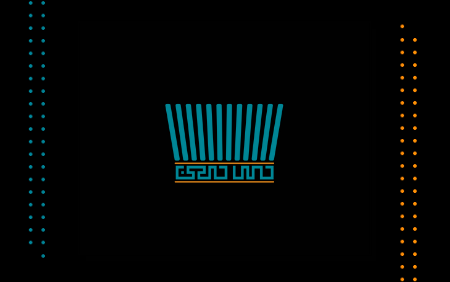MINIATURE
Paintings discovered by W. Sumner, on the walls of buildings, in Malayan heights, in Fars, belong to 5,000 years ago. Paintings discovered on earthenware in "Lorestan", "Sialk", and other archaeological sites, prove that the artists of this region were familiar with the art of painting. Also, from the Ashkani era (parts), few mural paintings, most of them discovered in the northern parts of "Forat" river, have been uncovered. One of these paintings is a display of a hunting scene. The position of riders and animals and the style in this work reminds us of the Iranian miniatures. In the paintings of Hakhamaneshi era, profile work was preferred by the artists. The proportion and beauty of the colors of this era are remarkable. The colors are shadeless and have the same tune. In some cases, black stripes limited colorful surfaces.
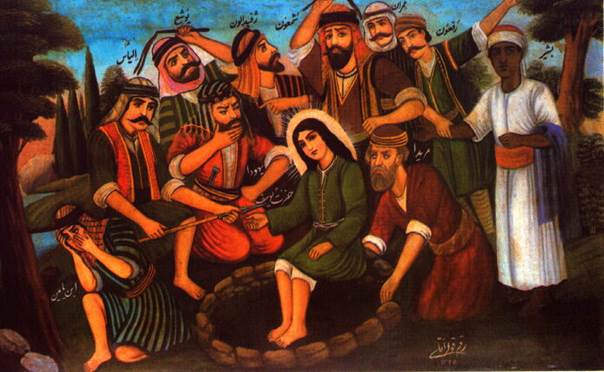
Mani, the Iranian painter, who lived about the 3rd century, was a skilled and expert painter. His paintings were thought to be part of his miracles. The paintings of "Torfan", discovered in the desert of "Gall", a region situated in the Turkistan province in China, belong to 840 to 860 AD. These mural paintings exhibit Iranian scenes and portraits. Images of tree branches also exist in these paintings. The most ancient paintings of the Islamic periodic, are quite scarce and were created in the first half of the 13th century. Iranian miniatures (fine and small drawings) came to Fife after the fall of Baghdad (1285 AD). Since the beginning of the 14th century, handwritten books were adorned with the scenes from battlefields, feasts and hunting.
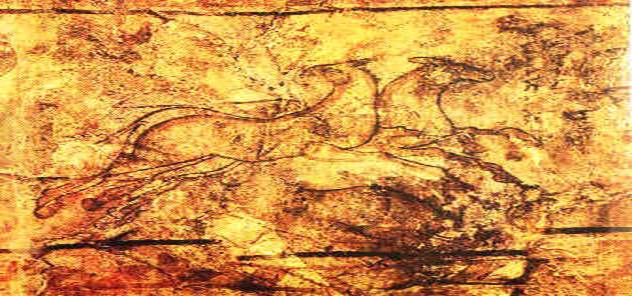
China, perhaps since the 7th century, as an artistic center, has been the most important incentive for the art of painting in Iran. Ever since, a relation has been established between Buddhist Chinese painters and, Iranian artists. From the historical viewpoint, the most important evolution in Iranian art has been the adoption of Chinese designs and coloring which were mixed with the specific conception of Iranian artists. The extreme beauty and skill of Iranian paintings are laid to describe. In the first centuries, after the emergence of Islam, Iranian artists began adorning books. The preface and the margins of books were adorned with. These designs were passed on, through on to the next centuries, together with precise principles and rules, which is known as the "Art of Illumination".
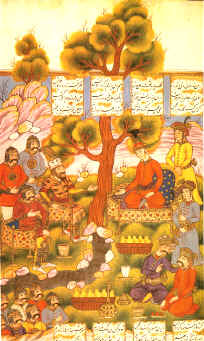
The art of illumination and adorning books made its path of progression under the Saljooghi, Mogol and Teimoor's reigns. Paintings from the beginning of the Islamic period had the reputation of belonging to Baghdad school. Miniatures of Baghdad school, have totally lost the style and methods of the usual paintings of the pre-Islamic period. These primitive and innovative paintings do not possess the necessary artistic stress.

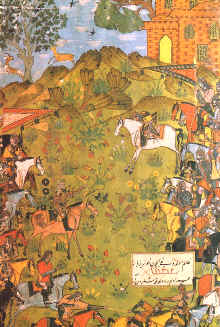
Among illustrated books in the Baghdad style, "Kelileh and Demneh" can be named. Images are painted larger than normal and are not proportional. Only a few colors are used in these paintings. Most of the handwritten books of the 13th century are enriched with images of animals, vegetables and illustrations from fables and stories. An example of the most ancient Iranian miniature is the drawings of a book called: "Manage-alHayvan" (1299 AD). This book describes the characteristics of animals. The natural history is mixed and narrated through the ancient fables in this book. Diverse subjects of this book, require numerous images which are So important in familiarizing the
reader with the Iranian art of painting. Colors are bright and laying step after the old style of the Baghdad school.
Mogul emperors, after the invasion of Iran, we're impressed by the Iranian art and encouraged the painters, initiating the former kings of Iran. After the invasion of Mongols, a new
school appeared in Iran. This school was totally under the influence of the Chinese and Mogul style. These paintings are all minute, dry, motionless and pure, in the Chinese style.
Among the characteristics of Iranian art which can also be observed in the paintings of Mogul style, we can enumerate, subtleties, decorative compositions, and fine short lines. The style of the Iranian paintings is linear and not dimensional. Artists in this field have demonstrated particular creativity and genuineness. Artists of the Mogul royal court honored not only the techniques, but also Iranian themes. A part of their work consisted of illustrating Iranian literary masterpieces, such as: "The Shahnameh" of Ferdowsi. Among the themes, portraits were of utmost interest. Contrary to Baghdad and Mogul schools, more works remain from Harat school. The founders of the style of painting called the Harat school were Teimoor's ancestors, and the school was named after the place in which it was founded.
Art experts believe that during Teimoor's era, the art of painting in Iran had reached a climax. During this period, outstanding masters, such as Kamal-ul-Din Behzad, contributed a new touch to the Iranian painting. The Temoorian period continued from 1370 to 1405 AD In this period, the art of miniature and book illumination, reached the highest degree of progression, and most famous painters gave life to their work in this period.
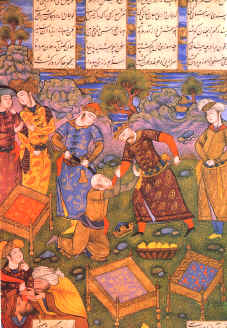
There remain 2 valuable illustrated books from the reign of Baisongor. One, being the "Kelileh and Demneh' and the other, "Baisongor's Shahnameh" (epic of kings). In the drawings of "Shahnameh", painted in 1444 AD in Shiraz, interesting examples of Iranian miniature art can be seen. One of these drawings represents a beautiful scene from an Iranian court, painted in the Chinese style. White and blue tiles and Persian carpets are drawn in geometrical shapes.
In one of the manuscripts of the book of "Khamseh Nezami", exist 13 excellent miniatures, drawn by "Mirak", the famous painter and calligrapher. The antificeless, sensitive, and artistic spirit of Baghdad's paintings are represented in the drawings of another volume among the works of "Khamseh Nezami". This precious work is preserved in "Britannia Museum". One of the liveliest paintings of this book shows the construction of the "Jozanag" palace. In this painting, masters and architects are busy building the palace. This miniature was painted in 1494 in Harat.
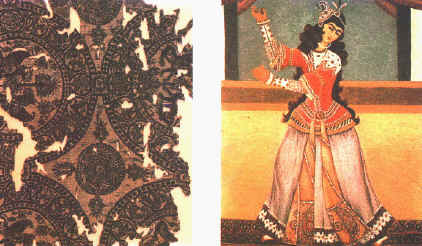
Behzad, the greatest painter of the Harat School, expanded the delicate art of miniature. He invented new patterns for natural facts and portraits, which did not exist before his time. One of the masterpieces of the Iranian art of painting is an illustrated book of "Shahnameh", preserved in the library of "Golestan" palace in Tehran. This "Shahnameh" was also illustrated under Baisongor. The Teimoorian prince, and belongs to the Harat School. The paintings of this book, from the viewpoint of coloration and the proportion of the
components in the images are to the highest degree of beauty and firmness.
